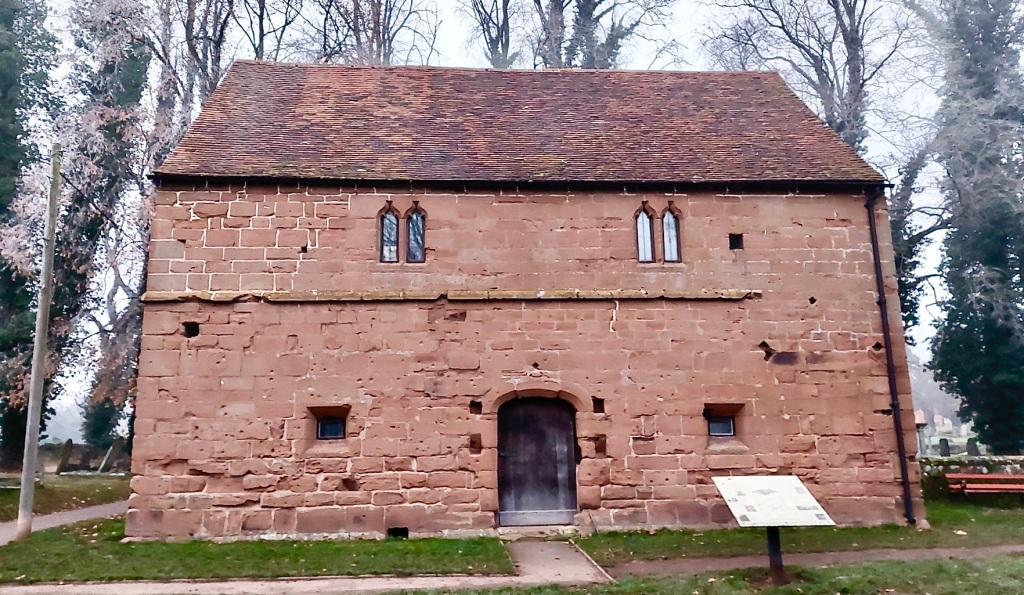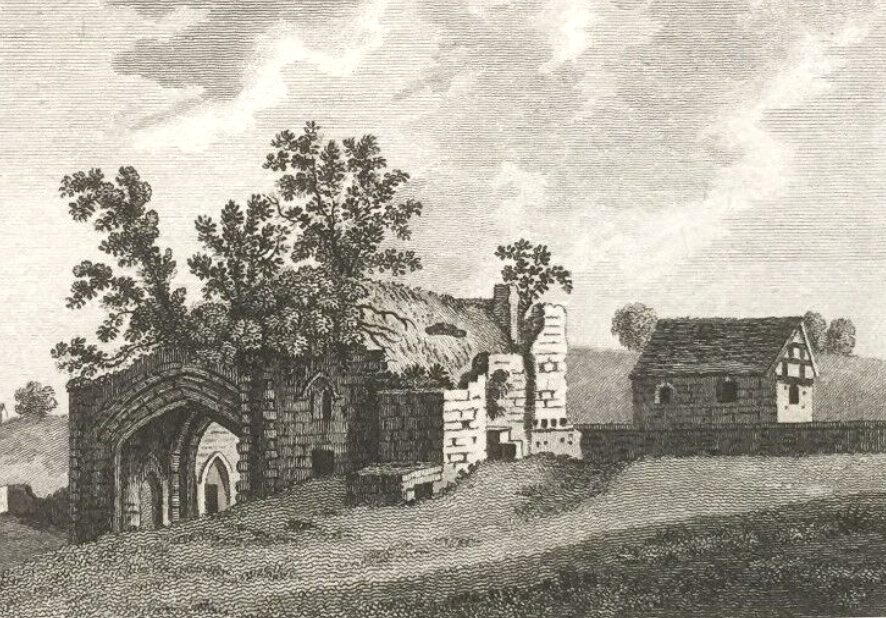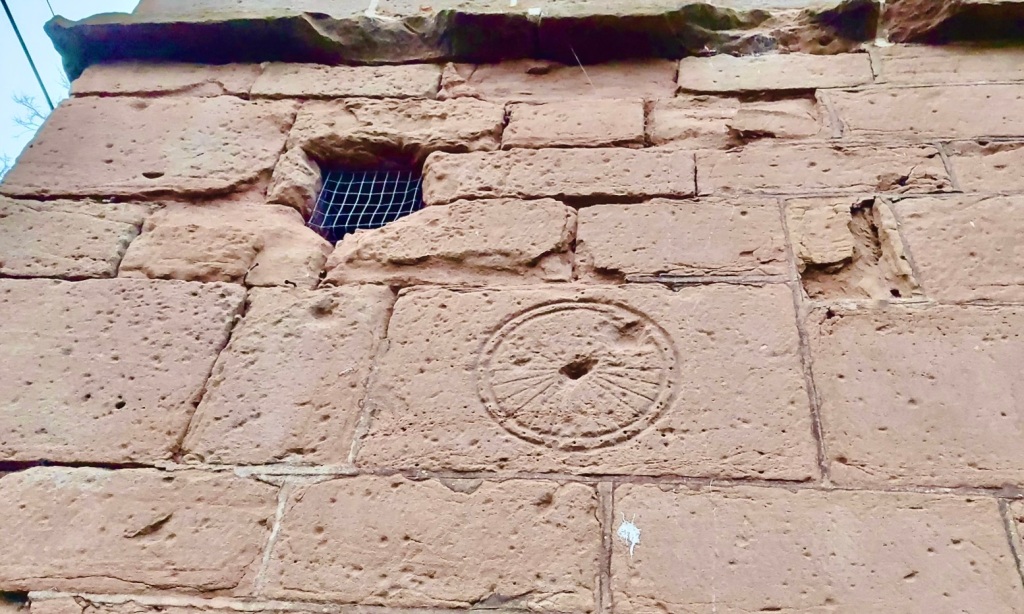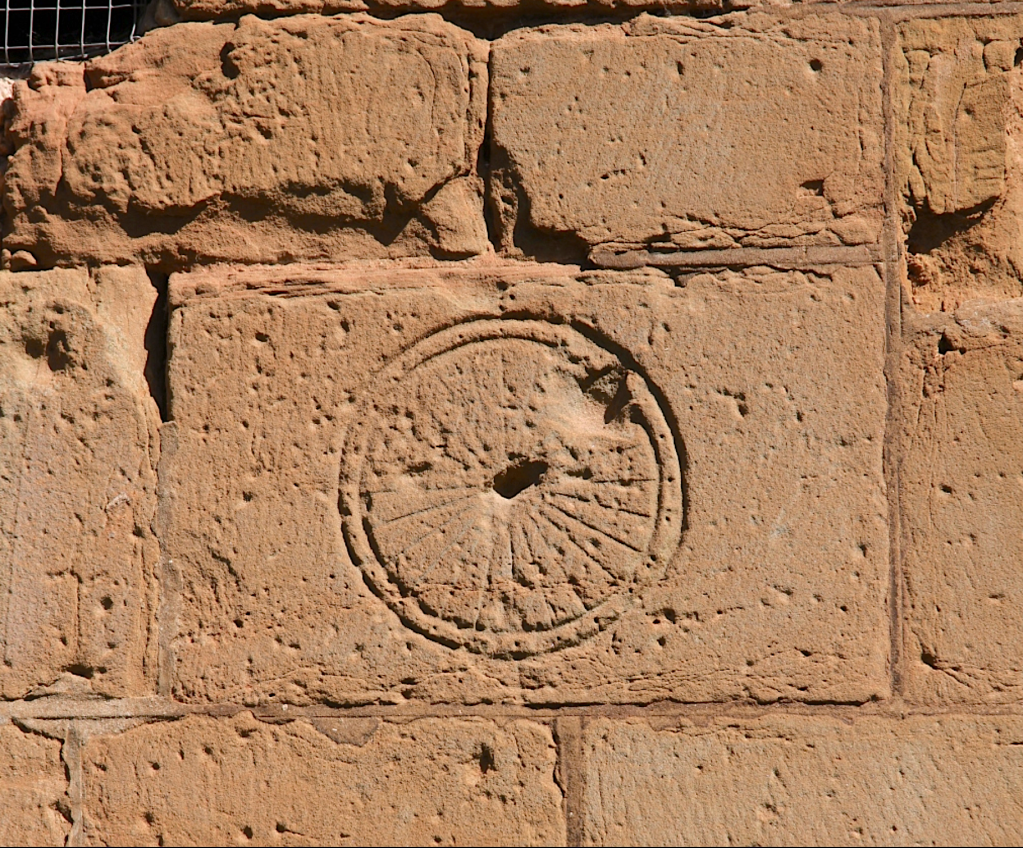
✣
TITHE BARN . BRADFORD-ON-AVON . WILTS

✣
GRADE I ✣ The huge tithe barn is dated to the 1330s, replacing an older barn. Even allowing for restoration and maintenance over the centuries, the barn very much retains the feel of a building unchanged for several hundred years. Its situation right by – and lower than – the K&A canal adds to the pleasure of the general surroundings.
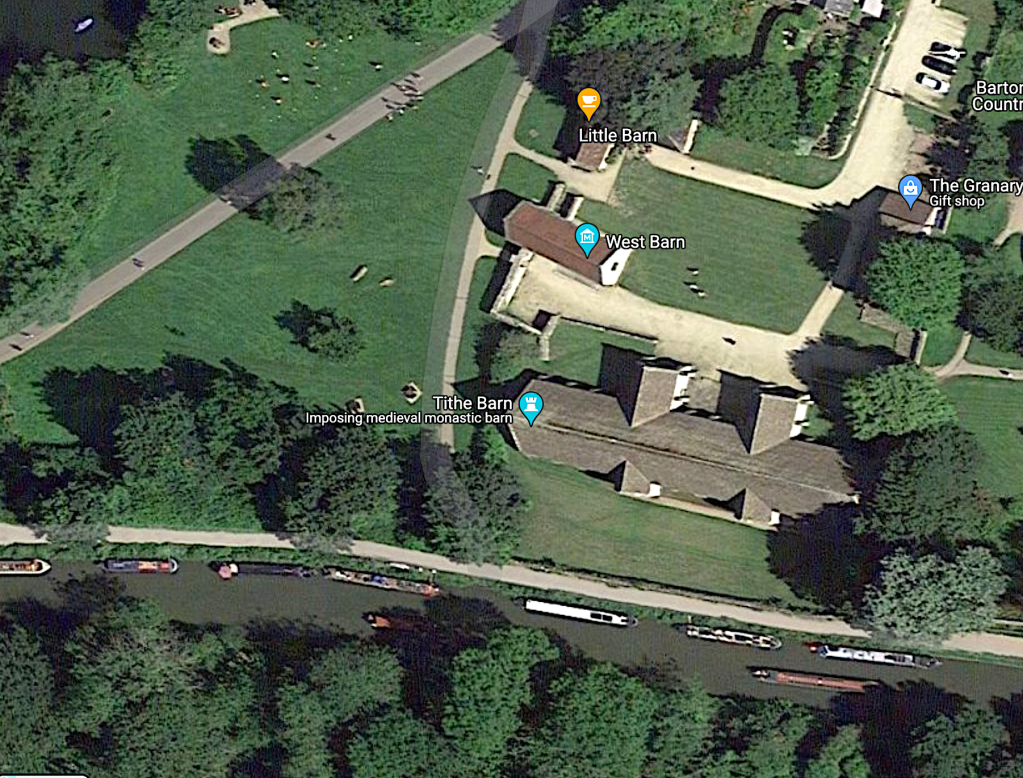
✣
DIAL
Scratch dials on buildings other than churches are rare. TWC mentions only 4 in his (admittedly dated) list of non-church dials, one of which is a tithe barn. Featured in this project are KENILWORTH ABBEY which has a dial on a barn that is a small part of the whole; and MUCHELNEY ABBEY which has one on the S wall of the Abbot’s Lodging. Neither can be regarded as entirely secular.
✣
The Bradford dial is located on the S wall on a buttress quoin stone near the entrance of the large E doorway. It is considerably eroded and damaged. I can’t see any trace of a dial above the horizontal and I take it to be a semicircle. There are ± 8 visible lines – impossible to be sure. The noon line is deeper cut and 9 (terce) seems more sharply incised, suggesting the main hour of observance. I am almost certain there there are terminal pocks on several lines, an impression taken more from the photos than from direct observation.
✣

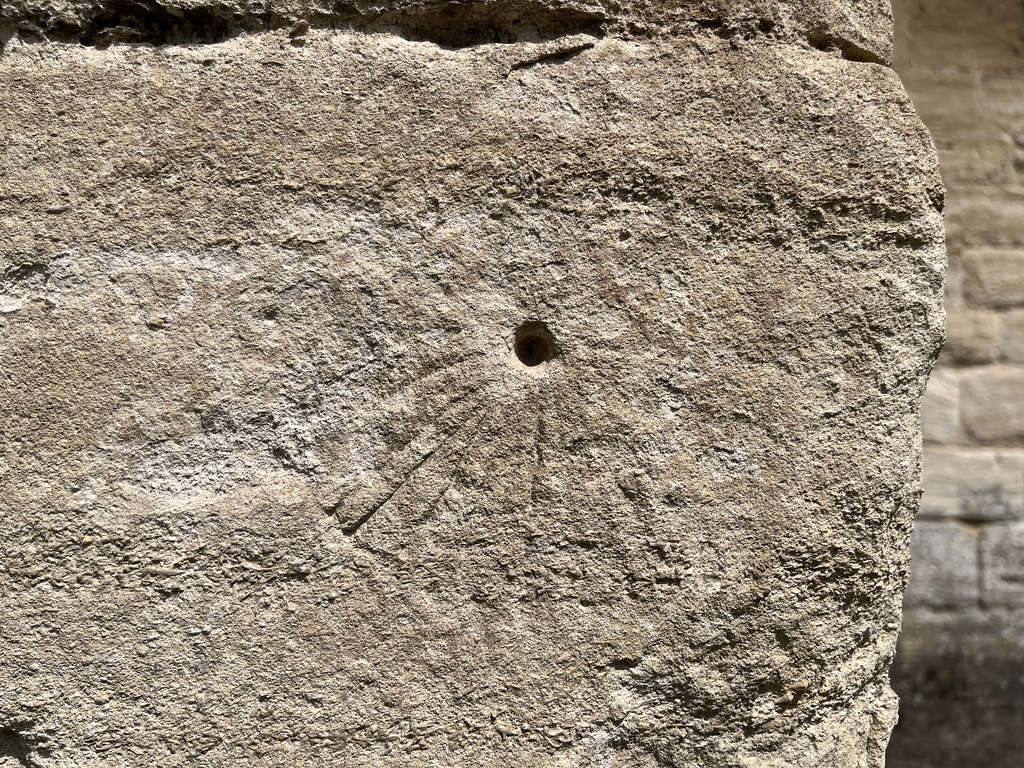
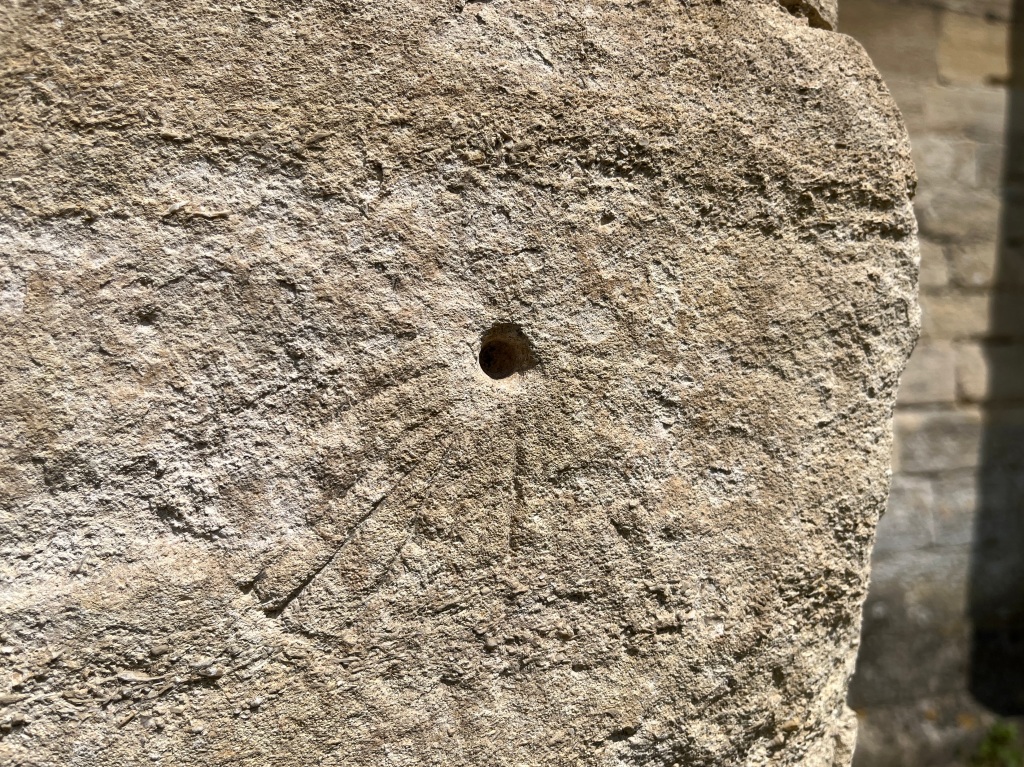
✣
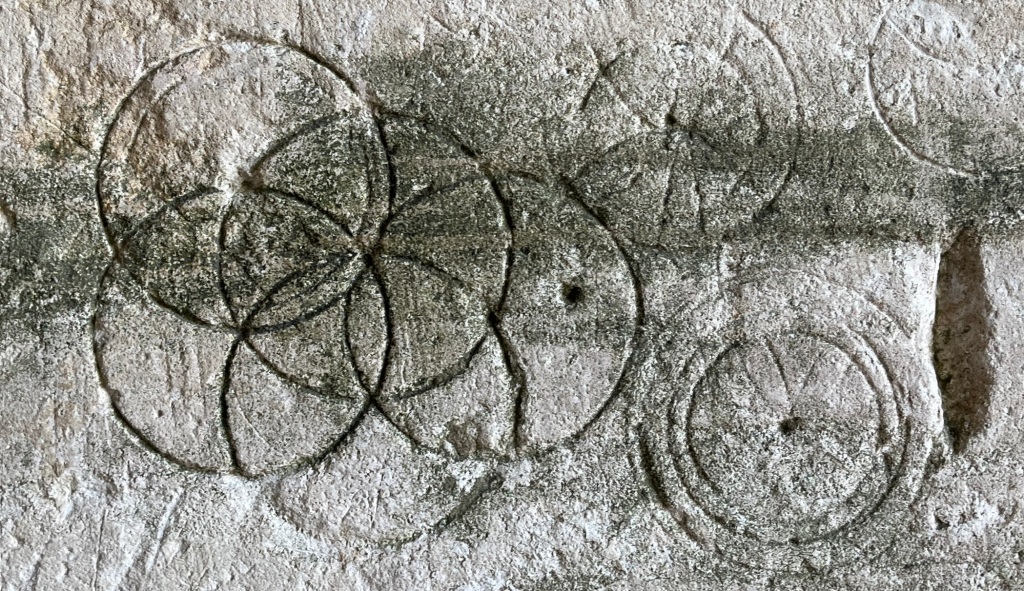
✣
PROTECTION MARKS AND GRAFFITI
Unsurprisingly for such a magnificent medieval structure, there is a vast omnium-gatherum of graffiti and protection marks, mainly at or close to the great entrances as one might expect. Anyone remotely interested in such marks will have a field day. Here is a small gallery.

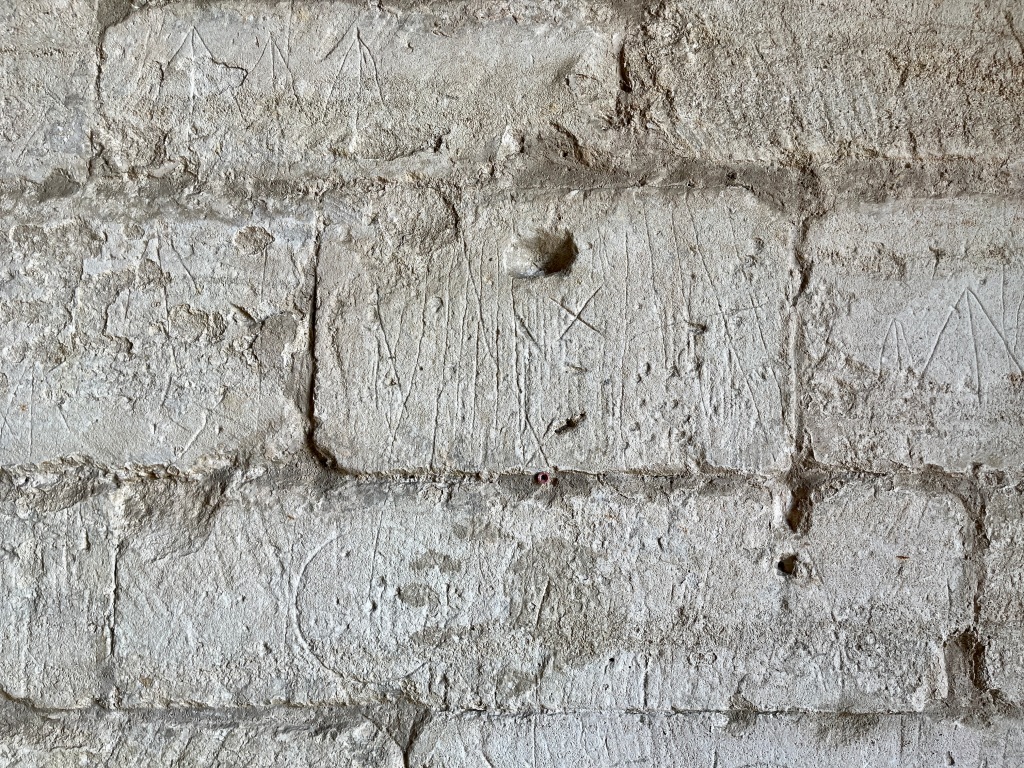

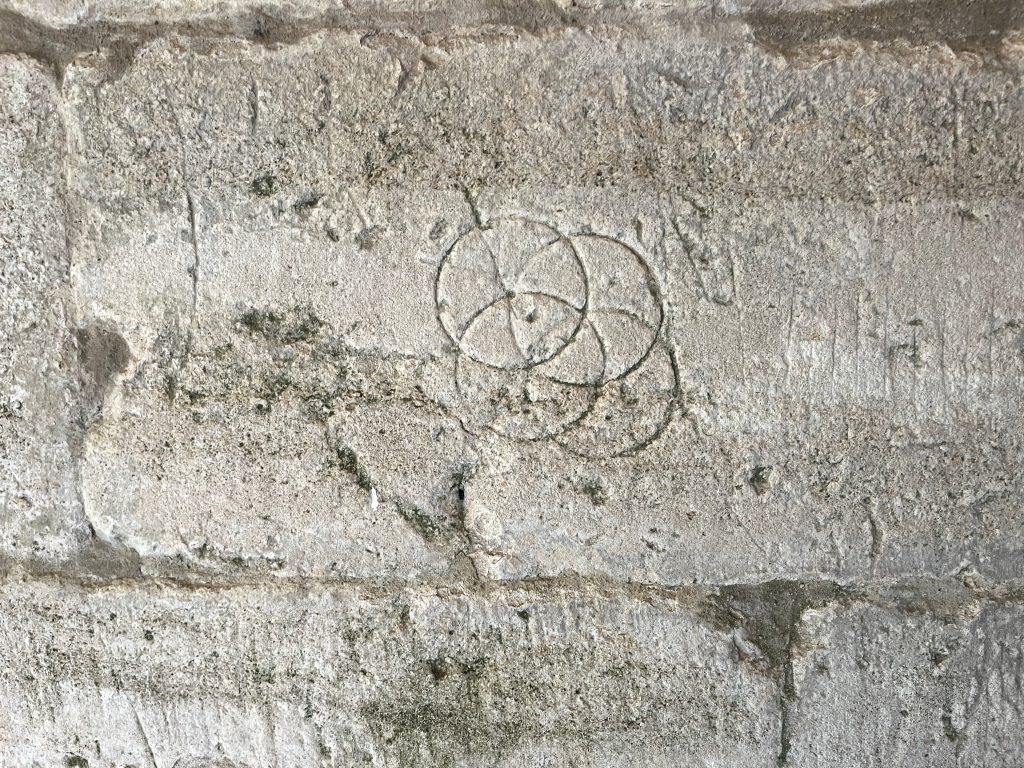
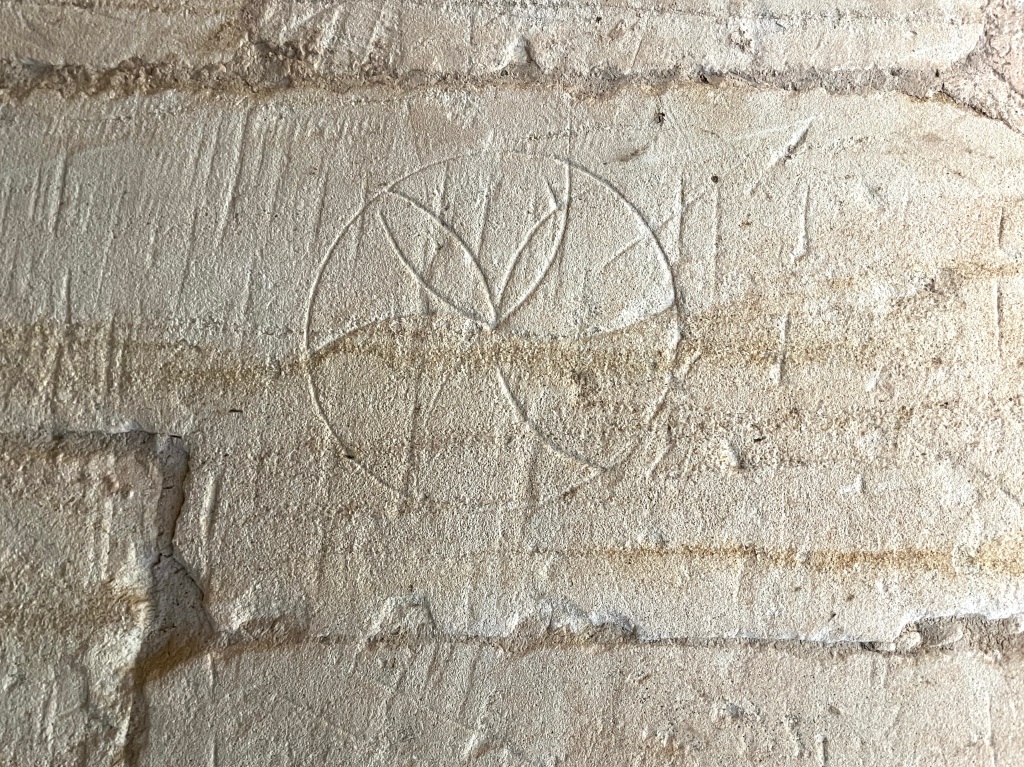


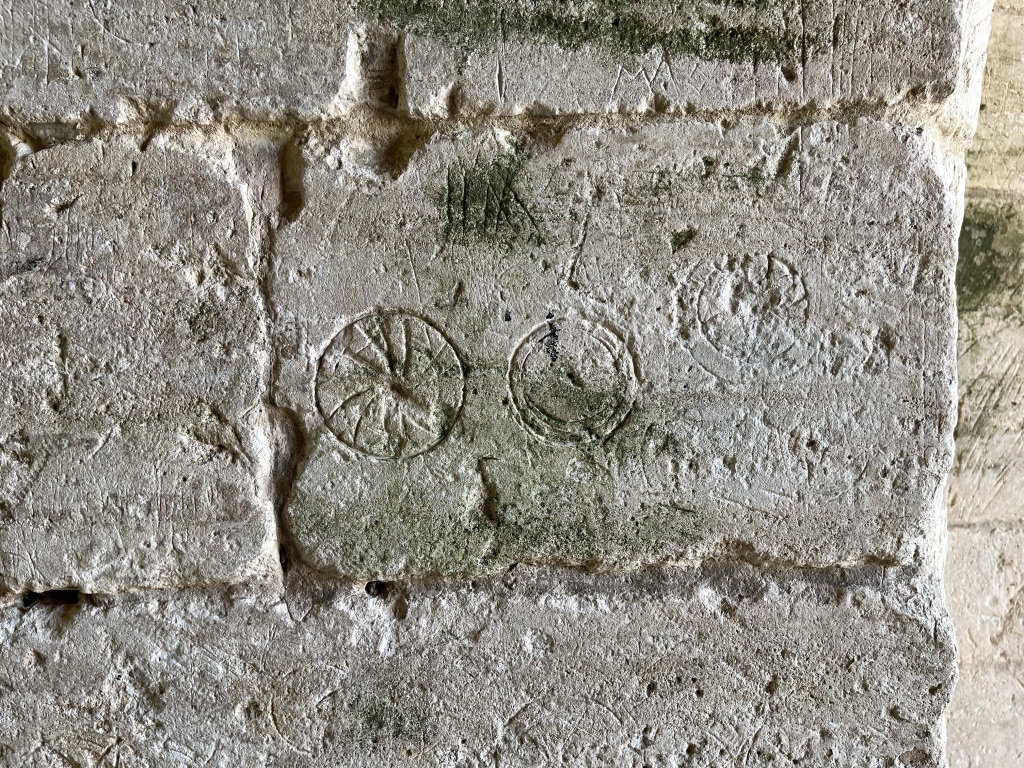

GSS Category: Scratch Dial; Scratch Dial on Barn; Secular Mass Dials; Protection Marks; Medieval Graffiti
All photos: Keith Salvesen. Please ask for specific use permission to use any of these. Normally I am relaxed, but these images relate to parallel research.

